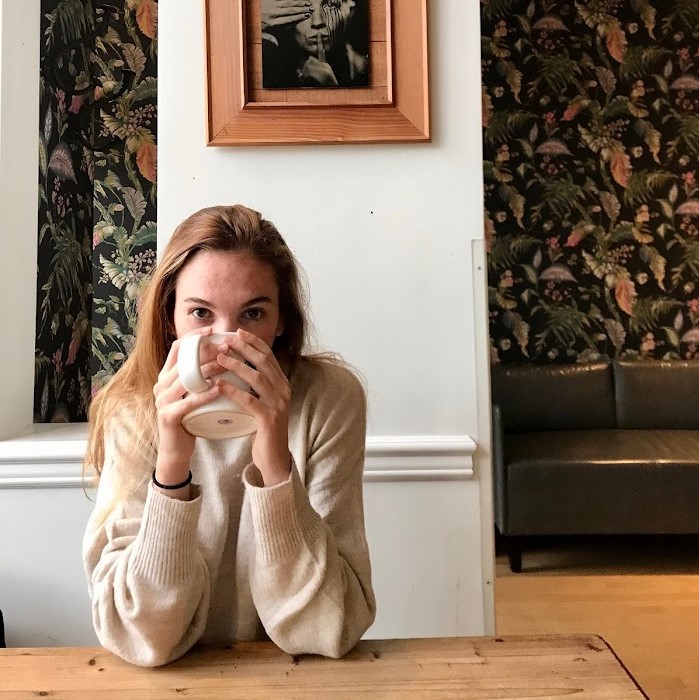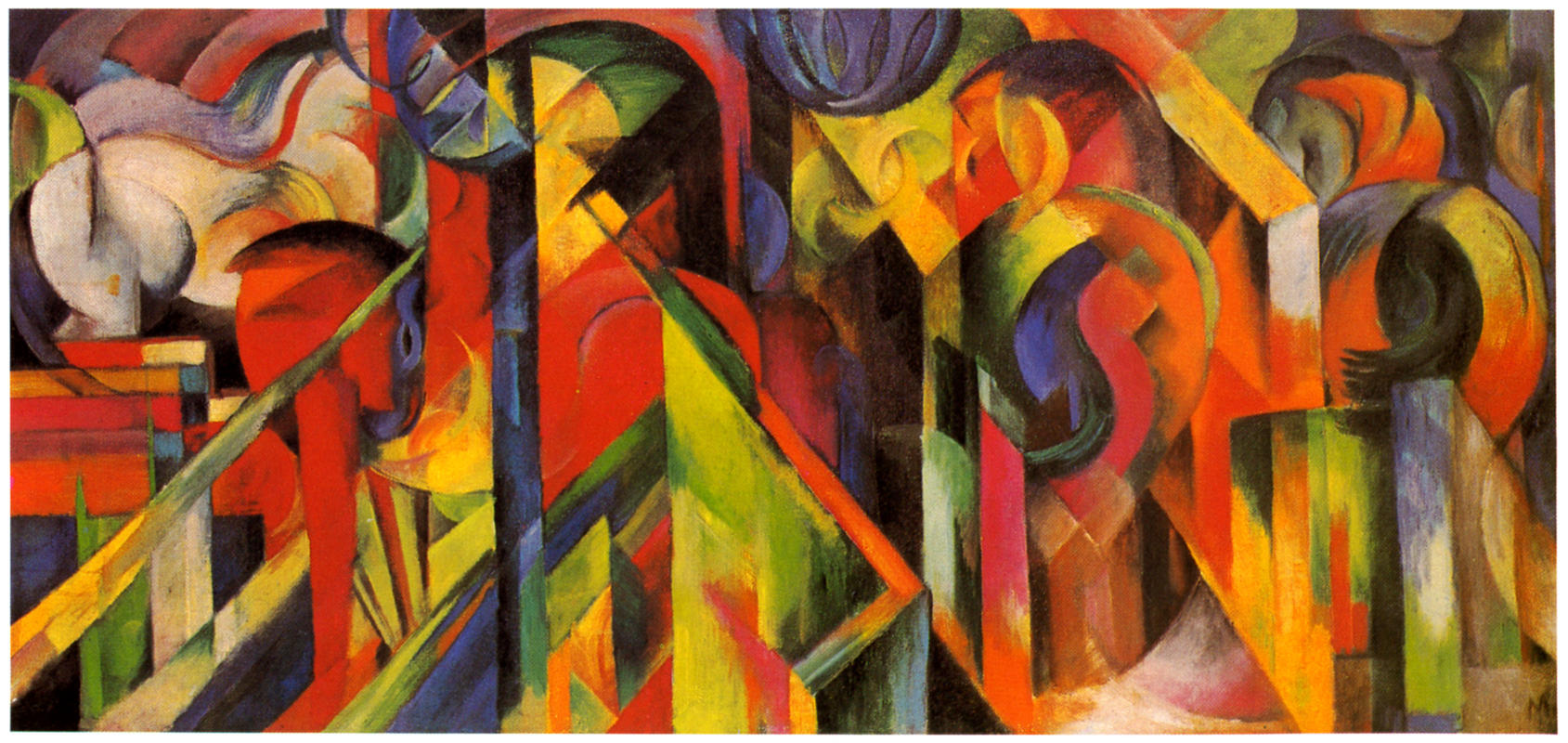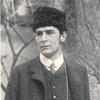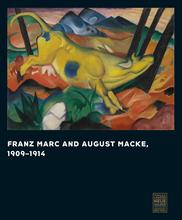More about Stables
- All
- Info
- Shop

Contributor
Franz Marc liked horsies.
Stables (1913) is the last major work by the artist before his death, depicts his favorite animal, the horse. As a member of the Der Blaue Reiter (sounds like a death metal band to me), Franz Marc and his colleagues Wassily Kandinsky and Paul Klee searched for the spiritual and emotional, exploring these themes through their art. In short, they were hippies who sought to use art as a vessel for seeking emotional meaning. So we can categorize Marc as a hybrid emo-hippie who used color to transform his canvas into conveying profound messages about humanity, the natural world, and the fate of mankind. He would totally listen to Death Cab For Cutie before they were cool.
Before becoming the front-man of the Der Blaue Reiter, Marc spent time in Paris in 1907 after suffering from severe depression from 1904-1907. Absorbing the works of Pablo Picasso, Van Gogh, Paul Gauguin, and Henri Matisse it is here that his signature style, in which he focused on color as the mode of expression, began to take shape.
For works such as Stables, Franz Marc spent countless hours at the Berlin Zoo studying and sketching animals. Through his study, he created a general theme for his animal subjects, moving almost entirely away from human figures in his artwork. To Marc animals were the ideal subject matter to depict truth, purity, and beauty. He strongly believed animals possessed a godliness that we humans have long lost. The blending of animal and abstract forms is suggested to indicate the effect of Futurist Robert Delaunay, whom Marc met in Paris.
Stables was created shortly before the start of World War I and during this time period, his work became more apocalyptic. Although apocalyptic in theme, Marc looked forward to the war believing that it would act as a cleansing, regenerating nature and re-stabilizing the world. Marc was so overzealous about World War I, he was quoted saying, "Is there a single person who does not wish this war might happen?" That optimism faded after the outbreak of the war, in particular when his good friend August Macke was killed in 1914. Franz Marc himself was killed in action on March 4, 1916. He was only 36 years old.
As a member of the German expressionist group, Franz Marc inspired much of the art we see later in the 20th century, including abstract expressionism. His use of color and insertion of emotional elements using animals, inspired many artists including Jackson Pollock and Willem de Kooning in America, and many can see influences of Marc in the works of Marc Chagall and Piet Mondrian. Although he lived a short life and most of his art was viewed controversially in Germany at the time, it is clear Franz Marc is one of the founding fathers of modernism in the 20th century. So for all of us modernist art historian groupies out there, we couldn’t drool over the works of our favorite abstract expressionists, fauvists, or minimalists were it not for Franz Marc’s love of horses.
Sources
- "Franz Marc and His Paintings." Franz Marc Paintings, Quotes, and Biography. Accessed July 12, 2018. http://www.franzmarc.org/.
- "Franz Marc." Online Database. Accessed July 12, 2018. https://www.guggenheim.org/artwork/artist/franz-marc.
- "Franz Marc Overview and Analysis." The Art Story. Accessed July 12, 2018. https://www.theartstory.org/artist-marc-franz.htm.
- "Franz Marc's Life and Legacy." The Art Story. Accessed July 12, 2018. https://www.theartstory.org/artist-marc-franz-life-and-legacy.htm.
- Marc, Franz. Stables. 1913. Solomon R. Guggenheim Museum, New York. In Collection Online. Accessed July 12, 2018. https://www.guggenheim.org/artwork/2773.
- Reyburn, Scott. "How Tastes Have Changed: 'Imps and Mods"' Stutter at London Auctions." The New York Times, June 22, 2018. Accessed July 12, 2018. https://www.nytimes.com/2018/06/22/arts/design/impressionist-modern-auc….
- "Stables (Stallungen), 1913 by Franz Marc." Franz Marc Paintings, Quotes, and Biography. Accessed July 12, 2018. Stables (Stallungen), 1913 by Franz Marc.












